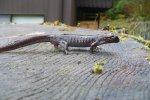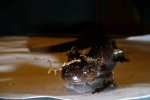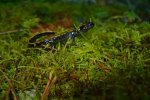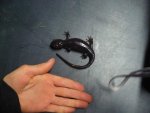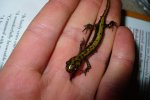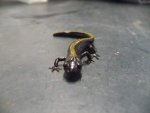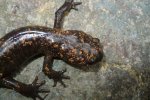Cole Grover
Member
- Joined
- Dec 6, 2012
- Messages
- 37
- Reaction score
- 5
- Points
- 8
- Location
- South-central Montana
- Country
- United States
As the title says, I'd like to make this thread the ultimate in Ambystoma appreciation, with the goal being to see representatives of as many species, subspecies, and regional variants as possible. Please post your (preferably) field photos of terrestrial adults, neotenes/paedomorphs, larvae, and eggs from across Canada, the US, and Mexico. (For less-accessable [in the US and EU] species such as A. andersoni and A. mexicanum, captive photos wild-type specimens are OK.)
I'll get us started:
Ambystoma mavortium melanostictum (found when it was COLD one Spring) - Yellowstone County, MT

Ambystoma mavortium melanostictum (multiple larvae found in a spring-fed cattle tank) - Sheridan County, Wyoming


Ambystoma mavortium melanostictum (the brightest of MANY flipped under rocks) - Stillwater County, Montana

Ambystoma rosaceum (Photo by my buddy Dell Despain) - Sierra del Nido, Chihuahua, Mexico

I'll get us started:
Ambystoma mavortium melanostictum (found when it was COLD one Spring) - Yellowstone County, MT

Ambystoma mavortium melanostictum (multiple larvae found in a spring-fed cattle tank) - Sheridan County, Wyoming


Ambystoma mavortium melanostictum (the brightest of MANY flipped under rocks) - Stillwater County, Montana

Ambystoma rosaceum (Photo by my buddy Dell Despain) - Sierra del Nido, Chihuahua, Mexico

Last edited by a moderator:

